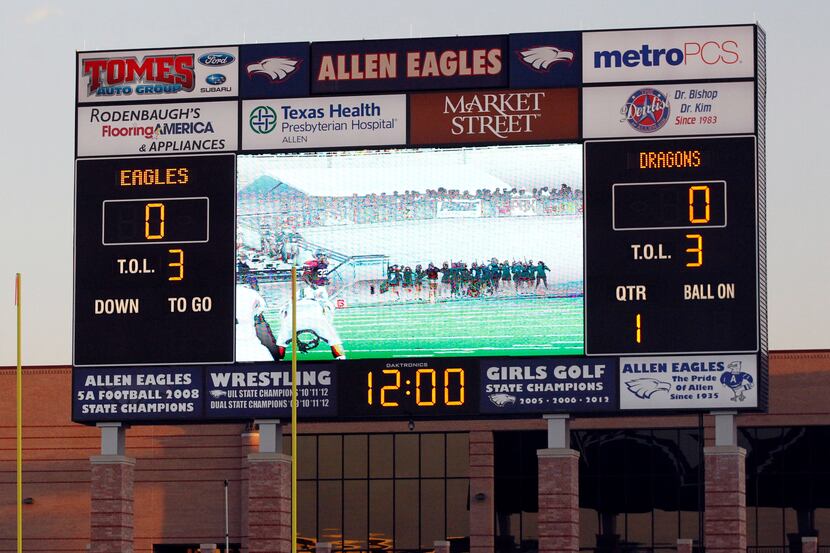Fear of missed calls leads to limitations on high-tech replays
The common description of Allen’s new $59.6 million stadium is that it looks like a college venue. That’s true, but not just because it has a 38-foot wide, high-definition video screen.
That’s a big screen, obviously, but dozens of high school stadiums in the Dallas-Fort Worth area have video boards of various sizes. They use them for highlights, replays, and — sorry, there’s no escaping it — commercials.
The technology is an exciting addition for fans. But when I see how clear the big-screen images can be at places such as Eagle Stadium and Southlake Carroll’s Dragon Stadium, I can think of some people who might be less enthusiastic.
The officials.
“There’s not one of us who doesn’t want to get every call correct,” said Tom Trautman, president of the Dallas Football Officials Association. “We also know that we’re not going to get all of them. With the speed of the game, there are some calls that are very difficult to make.”
Absolutely. And when those calls are debatable, a slow-motion replay makes it easier for fans to pick them apart. Those replays could be crisp and clear on the 874-square foot video board at Eagle Stadium or the 960-square foot screen at the Humble ISD’s Turner Stadium in the Houston area. Or what about on the video screen that Carthage just debuted at its stadium?
That thing is 1,200 square feet, and according to the company that installed it, the nation’s largest high school video board. (Yes, the largest video board is at the stadium of a high school with less than 800 students. For what it’s worth, quite a few of those students are excellent football players).
But you won’t see slow-motion replays on those screens. The University Interscholastic League allows only one replay of live game action on the video boards, and slow-motion replays are forbidden.
That helps protect the officials.
“The danger for us is when a controversial call is shown over and over on replay to get the crowd angry,” Trautman said. “What’s the point of showing it more than once if you’re not trying to make a statement?”
“You can create a pretty chaotic situation in the stadium that can be very difficult for officials,” added Robert Frazer, who has officiated high school and college games for 26 years.
A replay can also be misleading. While college and professional games have video from multiple angles, most high school stadiums have just one camera taking the video. One angle usually won’t provide anything definitive.
That was certainly the case with the controversial onside kick in last year’s Carroll-Skyline 5A state semifinal. The day after the game, video was posted on YouTube that, depending on the camera angle, supported or refuted whether the kick went the necessary 10 yards.
Even if there had been definitive proof, there is no replay review in football. The UIL allows replay review only for state championship basketball games, when officials can determine whether a shot beat the buzzer or was a 3-pointer. In football, one replay is enough.
But there are times when the officials wouldn’t mind a few more replays. Trautman was officiating a high school game at Cowboys Stadium when a coach began disputing a call.
Then came the replay on one of the world’s largest video screens.
“We both glanced up and watched,” Trautman said. “Then he tapped me on the shoulder and said, ‘Good call.’”
Follow Matt Wixon on Twitter at @mattwixon.
